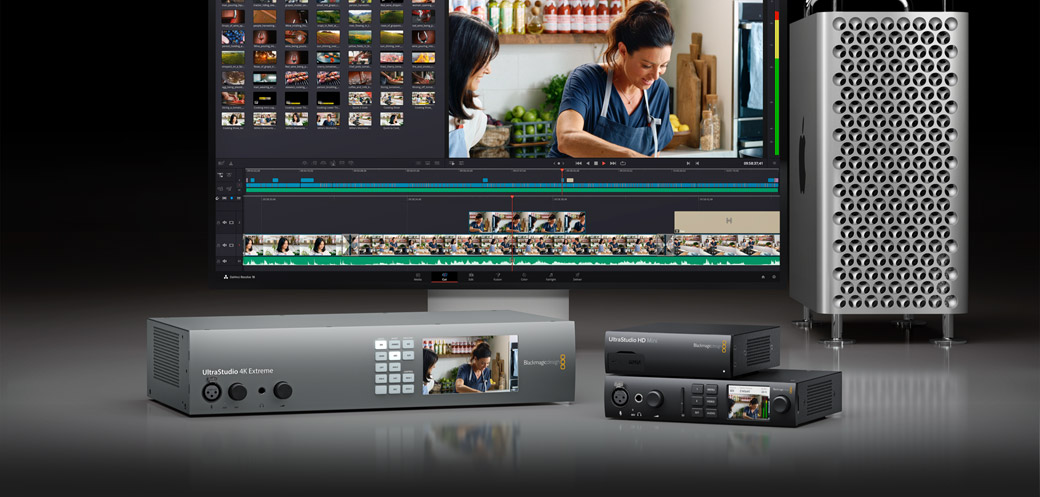
"The G4 has a special speaker port which works in conjunction with the sound control panel to adjust volume, etc.

But this produces a kind of feedback 'echo' which is really annoying ( on play-through only, the actual recording itself will be OK when you watch it.

However to take advantage of this you need the following: a pair of external speakers able to accept a 1/8 audio jack ( But not connected to the Mac's headphone port otherwise you hear nothing ) and special cable: RCA plug on one end, 1/8" audio jack on the other. "The Edirol device does have audio 'Out,' using RCA plugs, which allows you to hear sound output. You can't 'hear' what you're recording while you're recording it. The problem is, you don't get play-through sound. "Inside the ProTV's window panel, you select "USB audio device" and now you can get in-sync audio/video. Using RCA plugs:audio 'Out' and 'Into' the Edirol device, which then connects to a USB port in back of the tower. "Owing to the design of the motherboard and the absence of an analog 'audio-in' port in back of the G4's tower, I've had to buy an Edirol UA-1A USB audio device in order to import sound into the Mac while recording video on a Formac ProTVStereo. The lack of a standard analog 'audio-in' port on the latest Power Mac G4 desktops necessitates an external USB audio adapter, and playing recorded sound through the Mac's speakers has turned out to be a challenge:
#Record video on mac through sound card mac os x#
So depending upon your configuration simply changing your audio bit depth to 16 should work with the basic capture syntax:įfmpeg -f avfoundation -i "1:0" Screen.Continuing our coverage of digital audio input/output problems on a variety of Macs, we have reports on an inability to use play-through sound using a USB audio adapter difficulty muting the iSub under Mac OS X 10.2.x įormac Play-Through A poster in the MacFixIt forums laments over the Power Mac G4's inability to play-through sound that is being recorded through a n expansion audio card, such as Formac's ProTVStereo. Note, in Audio Midi Setup.app your "system audio" device will be indicated by a Finder icon and Speaker icon - I use an external monitor through my thunderbolt port and the "system" audio is routed to that device, not the Built-in Speakers. As far as I know FFmpeg will default to the bit depth of the source. You could change your "speakers" in Audio Midi Setup.app > Audio Devices::Built-in Output::Format until you find something that works, or you could specify the bit depth in the FFmpeg line command to match your settings. Likely, your audio recording sounds poor because bits are getting truncated.Īs Sarge Borsch notes, your Audio Midi Setup will show you what your bit depth and sample frequency are and give you some options. Indicates that ffmpeg has these formats and bit depths available: u8 8 I suspect that the reason your audio doesn't sound good is due to a bit depth discrepency. Note that the "1:0" is " Capture screen 0: Soundflower (2ch)"

Given that the Soundflower options are recognized as AV Foundation audio devices and are displayed in the output generated by the ffmpeg avfoundation -list_devices command, a basic capture of your desktop ( Capture screen 0) and stereo system sound ( Soundflower (2ch)) would be:įfmpeg -f avfoundation -i "1:0" Screen.mov "Speaker" audio is your system audio - what Soundflower is giving you access to. Is there a way to get output audio? $ ffmpeg -f avfoundation -list_devices true -i ""Ĭonfiguration: -prefix=/usr/local -enable-gpl -enable-nonfree -enable-libass -enable-libfdk-aac -enable-libfreetype -enable-libmp3lame -enable-libopus -enable-libtheora -enable-libvorbis -enable-libvpx -enable-libx264 -enable-libxvid I am trying to use ffmpeg recording screen as well as incoming audio on mac, but in the input device lists, there is no "speaker".


 0 kommentar(er)
0 kommentar(er)
